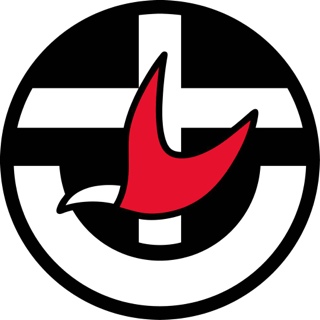Information
Document Number: CPRP-QA001
-
Conducted on
-
Client / Site
-
Prepared by
-
Location
Vehicle Details
-
Brigade Name:
-
Registration Number:
-
DMO Workshop:
-
DMO Installers:
PART 1 - INSTALLERS INSPECTION
1 - Cabin Curtains
-
1.1.a - Front Curtain - Deploy front curtain and check full coverage over front windscreen - check cutain coverage from inside and outside
-
1.1.b - Front Curtain - Check mounting points and velcro straps are firm
-
1.2.b - Front Curtain - Check mounting points and velcro straps are firm
-
1.3.a - Rear Passenger and Drivers Side ¼ Curtains - Deploy front curtains & check full coverage over windows
-
1.3.b - Rear Passenger and Drivers Side ¼ Curtains - Check mounting points and velcro straps are firm
-
1.4 - All Velcro secured to cabin trim with flanged rivets and large washer (evenly spaced)
2. ROPS Canopy and ROPS Curtainrop(StormKing MountainTM)
-
2.1 - Operation and latching of YELLOW handle
-
2.3 - Operation and latching of both slides
-
2.4 - Secure mounting of bracket/slide assy to side of ROPS
-
2.5 - Brush seal mounted to rear of canopy- Slide out awning and check that brush seal contacts top of ROPS along entire length.
-
2.6 - Check for paint chips or damage
2.7 ROPS Curtain
-
2.7.a - ROPS Curtain - Deploy front curtain & check full coverage to tray floor and ROPS sides
-
2.7.b - ROPS Curtain - Visual check for curtain damage e.g. tears and holes
-
2.7.c - ROPS Curtain - Check mounting points and Velcro straps are firm
-
2.7.d - ROPS Curtain Velcro secured to:<br>vertical and upper diagonal faces of ROPS &<br> inner upper corners of canopy<br>
3. Spray Plumbing
-
3.1 - Check all fittings crimped
-
3.2 - Check for evidence of sealant on ALL screwed fittings
-
3.3 - Check all hose clamps are tight and secure
-
3.4 - Check mounting & routing of soft plumbing:
-
a) Engine bay
-
b) under tray along chassis rail
-
c) Rear tyre sprays through tray frame packer and inside of mudguards
-
d) Front tyre sprays
-
e) no isolated low points general fall to spare wheel spray or tyre sprays as low point gravity drains
-
3.5 - Check mounting of:
-
a) Manifold - rear under tray
-
b) Electro-Torque Valve assembly mounting
-
c) Security of tyre sprays mounting/brackets
-
d) Sprays Filter flushing valve rear under tray
-
3.6 - Check security of:
-
a) Hose P clamps
-
b) Side guards cabin, ROPS, and body
-
c) Mounting brackets cabin (sides & front) & body (sides & rear)
3.7 Nozzle Set ups
Body - Side (incl. ROPS)
-
Type : Fan Jet
-
Flow Rate (l/min) 3.0
-
Position angle (+/- 2Degrees: 15.00 below horiz)
-
Position Distance (+/- 2mm): 20.00 from HS)
Body-Rear (2 off)
-
Type : Fan Jet
-
Flow Rate (l/min):4.5
-
Position angle (+/- 2Degrees: 15.00 below horiz)
-
Position Distance (+/- 2mm): 20.00 from Panel)
Cabin - Front (2 off) Fan Jet
-
Type : Fan Jet
-
Flow Rate (l/min): 5.5 (x2)
-
Position angle (+/- 2Degrees: 30.00 below horiz)
-
Position Distance (+/- 2mm): At target point
Cabin - Front (1 off) Side Wall discharge
-
Type : Side wall discharge
-
Flow Rate (l/min): 6.0 (x2)
-
Position angle (+/- 2Degrees: 30.00 above horiz)
-
Position Distance (+/- 2mm): At target point
Cabin - Side (5.5 x 2 off) Fan Jet
-
Type : Fan Jet
-
Flow Rate (l/min): 5.5 (x2)
-
Position angle (+/- 2Degrees): 15.00 below horiz
-
Position Distance (+/- 2mm): At target point
Cabin - Side (3 x 4 off) fan jet
-
Type : Fan Jet
-
Flow Rate (l/min): 3.0 (x4)
-
Position angle (+/- 2Degrees): 15.00 below horiz
-
Position Distance (+/- 2mm): At target point
Cabin - Rear (1 Off)
-
Type : Side wall discharge
-
Flow Rate (l/min): 12
-
Position angle (+/- 2Degrees): 30.00 above horiz.
-
Position Distance (+/- 2mm): N/A
ROPS - Sides (2 off)
-
Type : Side wall discharge
-
Flow Rate (l/min): 6
-
Position angle (+/- 2Degrees): 45.00 above horiz.
-
Position Distance (+/- 2mm): N/A
Rear Pump Bay Area (1 Off)
-
Type : Side wall discharge
-
Flow Rate (l/min): 6.0
-
Position angle (+/- 2Degrees): 30.00 above horiz.
-
Position Distance (+/- 2mm): N/A
Rear Pump Panel - (if Applicable)
-
Type : Fan Jet
-
Flow Rate (l/min): 3.0
-
Position angle (+/- 2Degrees): 15Degrees Below\ horiz.
-
Position Distance (+/- 2mm): 20.00 (from Panel)
Tyre (6 Off)
-
Type : Cone Spray
-
Flow Rate (l/min): 5.0
-
Position: Aimed at front edge of tyre and centerline of axle - cone pattern (flats) longitudinal to vehicle
Spare Wheel - (1 off)
-
Type : Cone Spray
-
Flow Rate (l/min): 5.0
-
Position: Mounted above trye generally angled onto upper face
4.0 Miscellaneous Metal Work
-
4.1 Pump Bay Area Infill Panels check for operation, latching, clear 1800 swing of door and paint finish
-
a) Offside Rear Panel (hinged)
-
b) Rear Offside Infill Panel (hinged) incl. Rubber stop
-
c) Rear Centre Panel (fixed)
-
4.2 Cabin/Body Infill Panels check for operation, latching, clear 1800 swing of door and paint finish
-
a) Offside Panel (hinged)
-
b) Nearside Panel (hinged)
-
4.3 Mudguards check mounting, retaining chains (as applicable)
-
a) Offside - forward and rearward mudguard
-
b) Nearside - forward and rearward mudguard
-
4.4 Battery Carrier Infill Panels
-
a) Check fitment of pinchweld (10mm plain wire ribbed) rear panel cable cut-out
-
b) Check fitment of insertion rubber front and rear panels adjacent battery terminals
-
4.5 Cabin Rear Glass Infill Panel
-
4.6 Rear Pump Control Panel Infill Panel (if applicable)
5.0 Electrical
-
5.1 - Wiring Loom
-
a) secured to inside of chassis rail (under tray)
-
b) secured behind cabin front grille
-
c) double pole double throw relay mounted in cabin dash
-
5.2 - Electro-torque valve (dry test without sprays working)
-
a) can be turned on and off from both cabin and ROPS observe indicator plate on head
-
5.3 - 2 x white LEDs fitted in ROPS hard wired through vehicle ignition
-
5.4 - 2 x GREEN LEDs fitted ROPS & Cabin (Overhead)
-
5.5 - 2 x YELLOW rotary switches ROPS & cabin dash
-
5.6 - Intercom
-
Operation from both cabin and ROPS
-
ROPS mounting PTT microphone (c/w clip) & speaker
-
Mounting of boom microphone in cabin above drivers side window (c/w clip)
6. Decals and Striping
-
PUSH TO RELEASE (x2) adjacent ROPS slides inside canopy
-
TANK FILL LINE DRAFTING rear pump bay rear
-
12 VOLT & 24 VOLT battery carrier
-
PUMP THROTTLE rear centre infill panel
-
CREW PROTECTION (x2) ROPS & Cabin
-
CREW SPRAYS DO NOT ISOLATE (x2) pump off take isolating valve, filter maintenance isolating valve
-
CREW SPRAYS ACTIVATED (x2) Cabin & ROPS
-
SPRAY FILTER FLUSHING VALVE rear under tray
-
Aerial ID fitted to ROPS Canopy roof
-
Matching body side striping offside rear infill panel & cabin body infill panel (both sides)
7.0 Miscellaneous
-
7.1 Aluminum flanged rivets on removed drip mold holes above lockers and touch up paint applied
-
7.2 Touch-up paint on:
-
§ ROPS canopy front flanged rivet heads & side M5 studs/nuts
-
§ Damaged paintwork infill panels & ROPS canopy
-
7.3 Drainage holes fitted/clear of obstruction to all locker front spoon drains
-
7.4 Ladder rack raised & mid roller adjusted (as required)
-
7.5 Vehicle clean and all texta marks removed
-
7.6 Field Change Notes
-
001 Spray filter drain plumbing
-
002 Intercom boom microphone mounting
-
003 Rear Centre Panel- Pressure gauge visibility
-
004 Front mud flap- Rubber replacement
-
005 N/A Information only
-
006 Rear Offside Infill Panel additional latching support
-
007 Rearward Mudguard Lower Flap Corner Radius
-
008 Accuride Slide Mount to ROPS Canopy
-
009 Earth Wiring Battery Isolator
-
010 Rear offside infill panel catch
-
011 Sidewall discharge nozzle bush
-
012 Rear offside infill panel stay
-
013 NOT YET ISSUED
-
014 NOT YET ISSUED
-
015 ROPS Locker Plumbing
-
016 Boom microphone relocation
-
017 Ensure curtain is dry before re-stowing decals
-
018 Fitting of additional rear hazard lights
PART 2 - OFFICER IN CHARGE INSPECTION, OPERATIONAL CHECKS
8. Operational Checks
-
Date of Inspection:
-
Brigade Name:
-
Registration Number:
-
1. Adjust tank level to nominal 1/2 full
2. Ensure cabin windows are closed and all panels/doors closed
3. Slide out ROPS canopy (Do not deploy curtains)
4. Turn on spray system from either cabin or ROPS yellow switches
5. Start Pump to activate sprays -
8.1 Check for correct fit-up/deployment of all cabin curtains
-
8.2 Operate sprays and check:
-
a) Pump idle reset to nom. 300-350 kPa
-
b) No blocked sprays and correct patterns over:
-
Body Panels
-
Cabin glass
-
ROPS
-
c) GREEN LED operates in cabin and ROPS
-
d) Continuous coverage over cabin windows
-
e) Continuous coverage over body sides & rear, look for spray misting along vehicle side as viewed from the rear.
-
f) Continuous coverage over ROPS side and top
-
g) Positioning and coverage over front and rear tyres
-
h) Operation of spare wheel spray
-
8.3 Measure time from when the reserve level AMBER strobe/alarm comes on <br>(If this is below 5 mins further investigation/remedial action may be required)
-
8.4 Shut down pump engine & check GREEN LEDs switch off
-
8.5 General check of all CPR installation components and panel alignment
-
8.6 Check field change note summary
-
NOTES:
1. Leave ROPS canopy out to dry off top of ROPS or chamois dry before stowing
2. Check ROPS curtain is dry before stowing ROPS canopy
3. Remove target points and other temporary markings on body
4. Once complete this page is to be returned to the Project Manager
Inspectors Details
-
Signature
-
Date Completed










